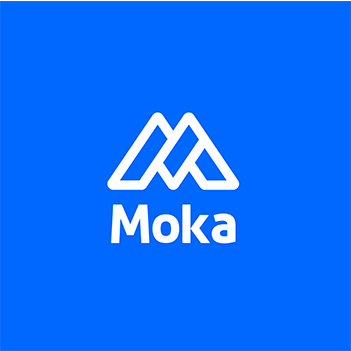Pros and Cons of Different Performance Evaluation Methods
Employee performance management is far from a walk in the park. With a wide range of evaluation methods and tools available, selecting the right one for your business goals requires an understanding of the strengths and weaknesses of each approach.

1. Performance Evaluation Methods
1.1 Traditional Appraisals or Checklist Method
This method evaluates employees based on pre-defined key performance indicators (KPIs) and a list of strengths and weaknesses. Managers assess whether employees meet these criteria and provide structured objectives. Typically, this is an annual review with linear ratings.
Pros:
Structured and Standardized: Provides a consistent framework for evaluating employee performance across the organization.
Learning and Development: Offers managers a chance to discuss goals, development plans, and performance expectations.
Compensation Decisions: Commonly tied to salary increases, promotions, and bonuses.
Documentation: Creates a performance record useful for future decisions and audits.
Cons:
Infrequent Feedback: Annual cadence limits real-time input and responsiveness.
Subjectivity: Heavily reliant on manager opinions, which may introduce bias.
Retrospective Focus: Prioritizes past performance over ongoing improvements.
Stressful Process: One-time, high-stakes evaluations can cause anxiety.
Time-Consuming: Especially challenging in large organizations.
Best For:
Manufacturing, retail, and warehouse operations where repetitive tasks align with quantitative assessments.
1.2 360-Degree Feedback
Gathers feedback from peers, supervisors, subordinates, and the employee themselves, offering a multi-faceted view of performance.
Pros:
Holistic Feedback: Encourages well-rounded evaluations.
Upward Feedback: Promotes accountability at all levels.
Fosters Self-Awareness: Encourages professional development through reflective feedback.
Cons:
Time Intensive: Collecting input from multiple sources can be a logistical challenge.
Bias Risk: Personal conflicts may skew responses.
Anonymity Concerns: Lack of anonymity may hinder honesty.
Best For:
Versatile for many industries, especially management roles and service sectors. Can be adapted to include customer feedback.
1.3 Management by Objectives (MBO)
This method aligns employee and organizational goals and tracks progress through measurable targets.
Pros:
Goal Alignment: Ensures personal goals support business outcomes.
Employee Ownership: Involvement in goal-setting increases engagement.
Clear Metrics: Uses SMART goals to clarify expectations.
Cons:
Difficult to Define Metrics: Not all roles lend themselves to clear KPIs.
Short-Term Focus: Risks ignoring long-term development.
Over-reliance on Goals: May overlook intangible contributions.
Best For:
Project-driven environments like consulting or professional services, where autonomy and trust are essential.
1.4 Self-Assessment
Employees evaluate their own performance against set goals or competencies, promoting personal responsibility and growth.
Pros:
Self-Reflection: Encourages personal insight into strengths and challenges.
Ownership Mentality: Promotes accountability and growth mindset.
Development-Oriented: Supports ongoing learning and improvement.
Cons:
Lacks Objectivity: Risk of overestimating or underestimating performance.
Limited Perspective: Needs to be paired with other evaluation types.
Best For:
Industries focused on soft skills and behavioral competencies, such as customer service or education.
2. Sample Performance Review Questions
Traditional Review Questions:
What technical skills have you developed this year?
How have these skills contributed to your daily work?
How would you describe your general work attitude?
How do you handle positive and negative feedback?
Can you share an example of how feedback improved your performance?
How do you align your actions with company culture and objectives?
Self-Assessment Questions:
What are your strengths and weaknesses?
Are you satisfied with your recent performance?
What are your career goals moving forward?
What new skills have you gained and what do you plan to learn?
What personal goals would you like to set?
Which tasks do you enjoy most or least?
How can we improve your work environment?
Objective-Based Questions:
What goals have you achieved during this period?
What were the outcomes of those goals?
What challenges did you face, and how did you overcome them?
What goals would you like to set next and how will you achieve them?
Do you believe your work has a direct impact on team performance?
Were your goals realistic or too ambitious?
360-Degree Feedback Questions:
How would you rate your collaboration with team members?
Have you received helpful feedback from peers?
How do you support your colleagues or direct reports?
What feedback have you received on your leadership?
Do you have a productive relationship with your manager?

3. Performance Review Outcome Examples
Positive:
"This employee met all key standards in our evaluation framework. Their proactive attitude and focus on personal goals positively impacted the team. I also see leadership potential, which we will support in future reviews."
Progress-Focused:
"After a dip in performance, this employee made commendable improvements by incorporating feedback. I expect continued growth and stable productivity in the next quarter."
Needs Improvement:
"Despite prior discussions, this employee hasn't implemented feedback and shows low morale. We’ve established a performance improvement plan and will reassess next month."
Final Thoughts
Regardless of method, effective performance evaluation should focus on boosting engagement, productivity, and employee development. Ongoing feedback, aligned objectives, and the right tools can turn performance management into a driver of business success.
FAQ Section:
Q1: What is the best performance evaluation method?
A: There is no one-size-fits-all method. Traditional reviews work for structured environments, while 360-degree feedback and MBO are better for collaborative and goal-driven teams.
Q2: How does 360-degree feedback benefit performance evaluation?
A: It provides holistic feedback from peers, managers, and subordinates, fostering self-awareness and balanced performance insights.
Q3: Why use self-assessment in performance management?
A: Self-assessments encourage employee reflection, accountability, and continuous development, especially when paired with objective evaluations.
Q4: What is MBO in performance management?
A: Management by Objectives (MBO) is a method where employees and managers set and track measurable goals aligned with organizational objectives.
Q5: Can different evaluation methods be combined?
A: Yes, combining methods—like self-assessment with traditional reviews or MBO—can provide a more balanced, accurate performance view.
From recruiting candidates to onboarding new team members, MokaHR gives your company everything you need to be great at hiring.
Subscribe for more information

